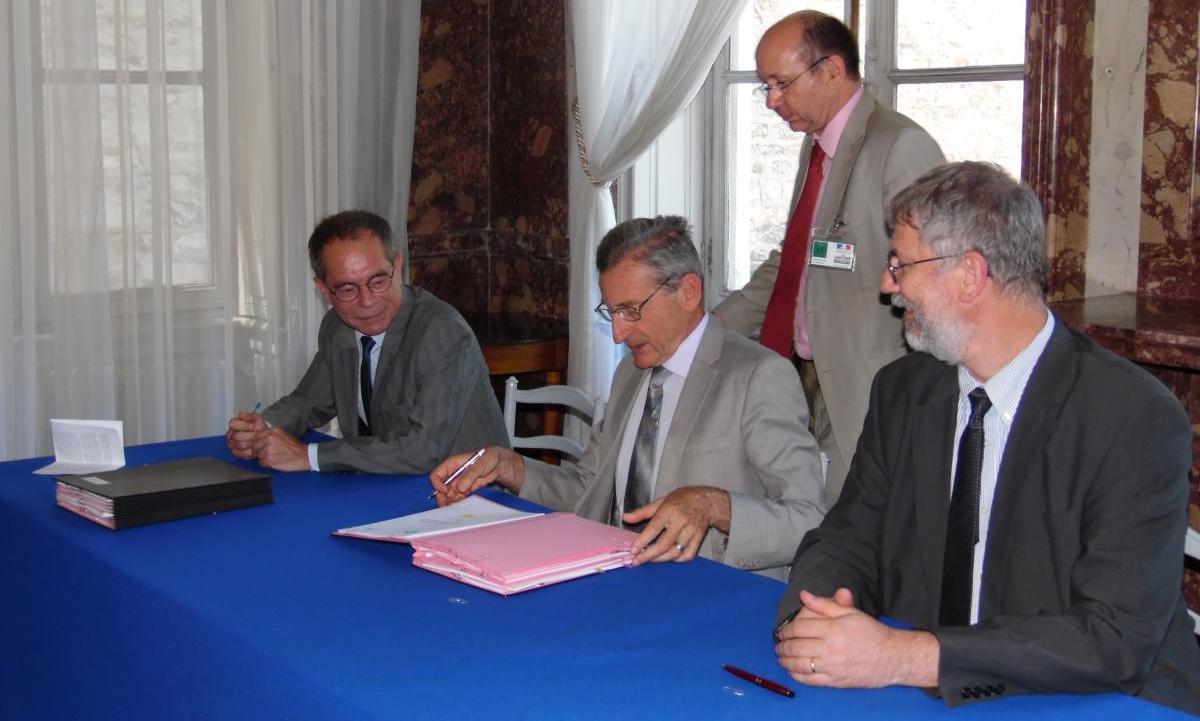Signature of convention with The French National Research Agency (ANR)
Michael Matlosz, President and CEO of The French National Research Agency (ANR) et Philippe Auriol, President of SuperGrid Institute SAS, signed the 6 of July 2015, in attendance of Thierry Francq, Assisting General Commissioner to the Investment, the agreement granting subsidy signed between the ANR and SuperGrid Institute.



